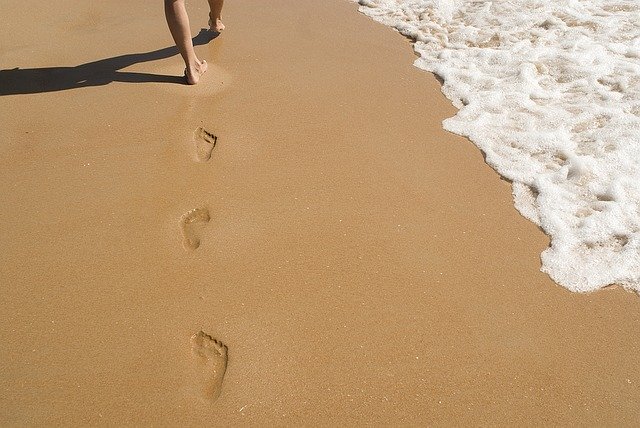Flat foot and cavus foot - what's the difference?

The arches of your feet support the weight of your entire body during all activities. But strong as they may be, they are still prone to two fairly common conditions - flat foot and pes cavus. How do these conditions differ and what is their impact on our feet? Continue reading to find out!
It’s time to give credit where credit is due - our feet are a complex combination of muscles, bones, tendons and ligaments which all function together to bear and support the entire weight of our bodies and let us perform any number of activities. In most everyday situations, we tend to take them for granted, however, although they support our entire bodyweight, our feet are also prone to a number of conditions, such as flat foot and cavus foot. Before diving into these conditions, it’s important that we first have a firm understanding of the inner workings of the feet.
The feet are divided into three distinct sections, which are:
- The forefoot: this part contains the phalanges (toes) and metatarsals (long bones connecting to the toes).
- The midfoot: this section is composed of three different types of bones, which are the navicular, cuboid and three cuneiform bones. They form the arches of the feet and are found behind the metatarsal bones.
- The Hindfoot: this part of the foot is formed by the talus and calcaneus (heel bone, the largest bone in the foot) bones, which support the leg bones and form the ankle.
Additionally, the foot has three arches, which are the medial longitudinal arch (inside of the foot, the lateral longitudinal arch (outside of the foot) and the anterior transverse arch (from the inner heel to the smallest toe).
What is flat foot?
Stand up straight and with your feet firmly planted on the ground, look at them from the inside - do you see an arch? If so, then you don’t have flat feet, however, if your feet are laid out flat against the floor, then you may have this condition (Flat feet). But what exactly is causing this to happen? Well, your feet should have an arch if your tendons are functioning properly. The tendons from the lower portion of your leg and foot (posterior tibial tendon) pull together in unison, which causes the arch, and if you’re lacking one, then your tendons may be the cause (What Are Fallen Arches?).
Although a flat foot condition isn’t too serious, it can be a warning sign for other conditions. You may have flat foot if you’ve outstretched or torn the tendons in the feet, have broken on dislocated bones or a damaged or inflamed posterior tibial tendon (PTT), which goes from the lower leg, to the mid section of the arch (What Are Fallen Arches?). As mentioned previously, flat feet aren’t necessarily dangerous to one’s health, however, they may come with a number of symptoms including foot pain at the arch, swelling and difficulty moving the feet or standing on one’s toes (What Are Fallen Arches?).
What is cavus foot?
Cavus foot, or pes cavus, is a condition where the foot has an exceptionally high arch, thus distributing your bodyweight more on the heel and less on the entire foot, which can cause significant pain (High Arch Feet, And Why They Are a Problem). This condition is very noticeable, as the high arch sticks out in an unnatural position, which begins at the joint where the phalanges and metatarsals meet. Here, the metatarsals bend upwards towards the midfoot bones, but at an extreme angle.
In most cases, this condition is inherited at birth and can be caused by cerebral palsy, spina bifida, polio and even stroke. Walking with pes cavus not only causes severe foot pain, but also creates calluses on the heel and toes and may further develop into hammertoes (toes that look bent) and claw toes (toes that are rolled into a fist shape) (High Arch Feet, And Why They Are a Problem). Aside from that, pes cavus sufferers are also more prone to having ankle sprains and difficulty maintaining balance on their feet. Unlike flat foot, this condition is far more dangerous, as it significantly impedes your ability to walk and weakens the musculoskeletal system.
How are these conditions treated?
When looking to treat these conditions, it is important to first note the differences between flat foot and cavus foot. Cavus foot is often caused by neurological conditions, whereas flat foot is typically brought on by leg and tendon injuries - however, both can also be inherited. In order to receive a proper diagnosis and treatment options, it is important that you consult with your doctor.
Although both conditions can be self diagnosed, it is important that you receive a medical professional’s diagnosis, especially in the case of cavus foot. Cavus foot caused by neurological conditions may worsen over time, which will more than likely require surgical treatment - therefore it is vital to seek out a medical professional immediately if this condition is suspected (High Arch Foot - Pes Cavus). Your doctor will inspect your feet, toes and posture and will make a power assessment to see if your leg muscles are functioning correctly as well (High Arch Foot - Pes Cavus).
In the case of diagnosing flat feet, your doctor will check your health history, have you perform simple movement tests and will test the strength of your leg muscles and tendons (Achilles and posterior tibial tendon) (What Are Fallen Arches?). In extreme cases where pain and foot damage is severe, your doctor may also recommend surgery. Thankfully, there are other, less invasive treatment methods for both flat foot and cavus foot conditions - the most commonly recommended are foot orthoses and orthopedic shoe insoles. If you’ve been diagnosed with pes cavus, your doctor will recommend a specialized insole, shoe modifications and bracing, that will add support, improve balance and help correct any biomechanical issues you may be facing (High Arch Foot - Pes Cavus). As for treating flat feet, you may also be recommended insoles, shoe modifications and braces to correct your condition. However, if it is caused by something more trivial, like tendon inflammation, then resting your leg, applying ice packs, stretches and physical therapy can also ease pain and help correct this issue.
Sources:
- “Picture of the Feet”, Matthew Hoffman, MD, 2019 https://www.webmd.com/pain-management/picture-of-the-feet#1
- “Flat feet” NHS, 18 September 2018 https://www.nhs.uk/conditions/flat-feet/
- “What Are Fallen Arches?” American Academy of Orthopaedic Surgeons, 2020 https://www.webmd.com/pain-management/what-are-fallen-arches#1
- “High Arch Feet, And Why They Are a Problem”, Eric Turner, March 6, 2018 https://orthopedicassociates.org/high-arch-feet-and-why-they-are-a-problem/
- “High Arch Foot (Pes Cavus)”, COFAI • August 23, 2018 https://caribbeanfootankle.com/high-arch-pes-cavus/

